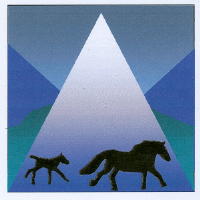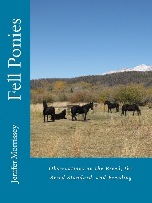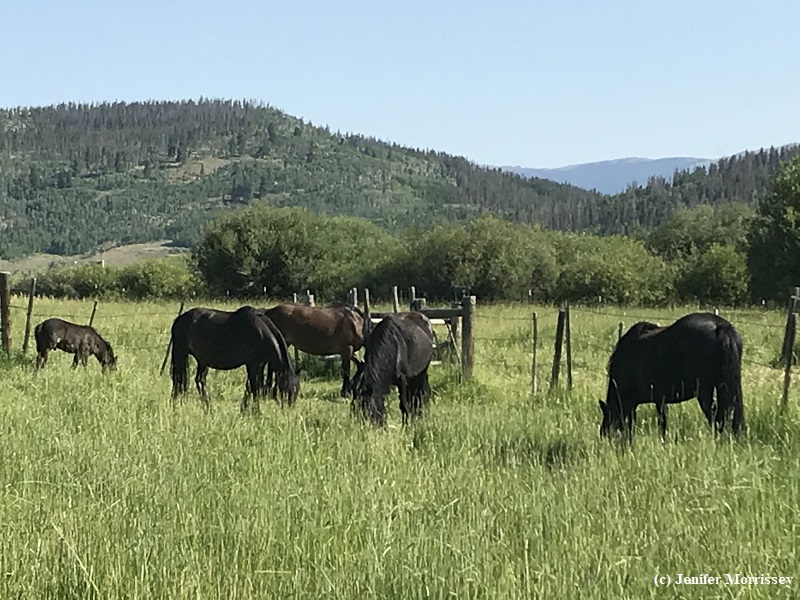Help When I Need It Most
/When I arrived at summer pasture with the first mare/foal pair of the day, I immediately saw that fencing was going to be added to my day’s to-do list. A few weeks ago, the ranch manager had put cattle in the pasture to the north of the ponies and had secured all but the piece of fence that crosses the river. When the cows were put in, the river was extremely high and the cattle were far to the north, so the gap in the fence wasn’t an issue. Now, though, the river is lower, and the cattle were just across the fence from the ponies, so I knew it wouldn’t be long before they’d find the gap and enter the pony pasture.
On my way home I made a mental list of the tools I would need when I returned to pasture with the second pony load. I also realized I would need to call the ranch manager to ask for help because while the river was lower, it was still high enough that I couldn’t stretch the fence by myself. I just hoped I’d be able to catch him on the phone on the first dry day for haymaking of the week.
As has been the case since my husband died earlier this year, help has been offered when I need it most. Just as I turned on my blinker to turn into my driveway, a pickup and horse trailer came towards me down the county road. I stopped, and I realized my logistical prayer had been answered. It was the ranch manager. He assured me he’d have someone there to help me immediately. It was good that I had asked because I fell face first into the river while working with his ranch hand stretching fence. No harm done, but good that someone was there just in case.
The larger pattern of my life has been that when my life is in transition, everything seems to be in transition: job, home, life partner. It’s happened this way twice before, and this time is no different. Due to losing my husband, I lost my job, and I have to move my farm before winter. But just as has been the case since things tragically changed earlier this year, help has been offered when I needed it most. Bruce and Linda Murdock of Scotty Springs Ranch outside Hot Springs, South Dakota have invited Willowtrail Farm to relocate there. I am so incredibly grateful. I met Bruce and Linda through my dog. They bred Scotty Springs Taptika, an Australian Shepherd, and we’ve gotten to know each other the past three years because of Tika. The place they have offered is ideal for raising Fell Ponies, and I am humbled by the opportunity they have given me.
I so appreciate the many people who have asked how I’ve been doing and where I’m going and extending their well wishes. Each and every one of those gestures has been just the help that I needed at the moment. Thank you from the bottom of my heart.
© Jenifer Morrissey, 2019














































